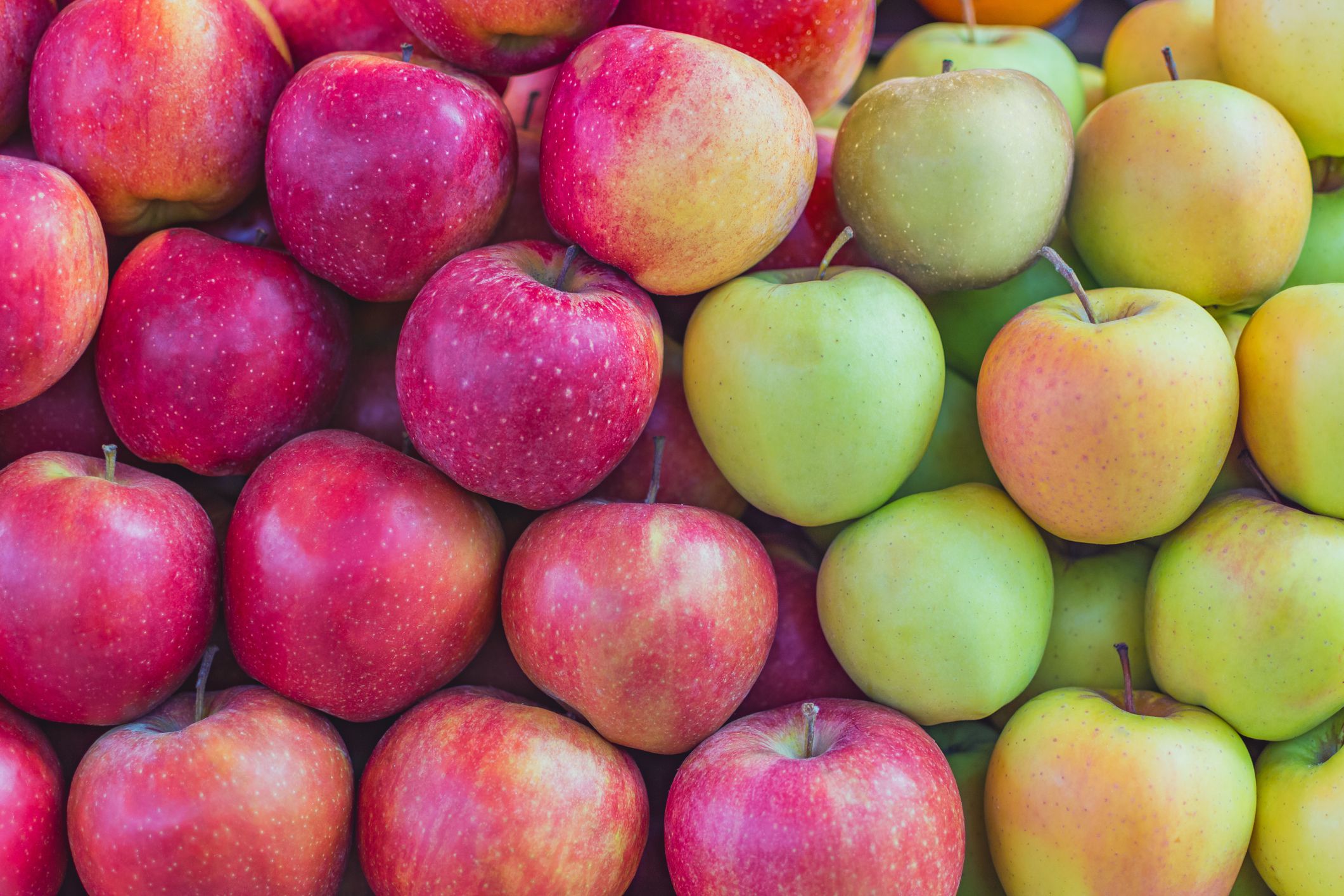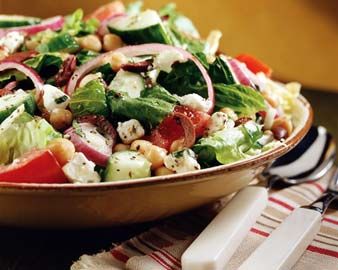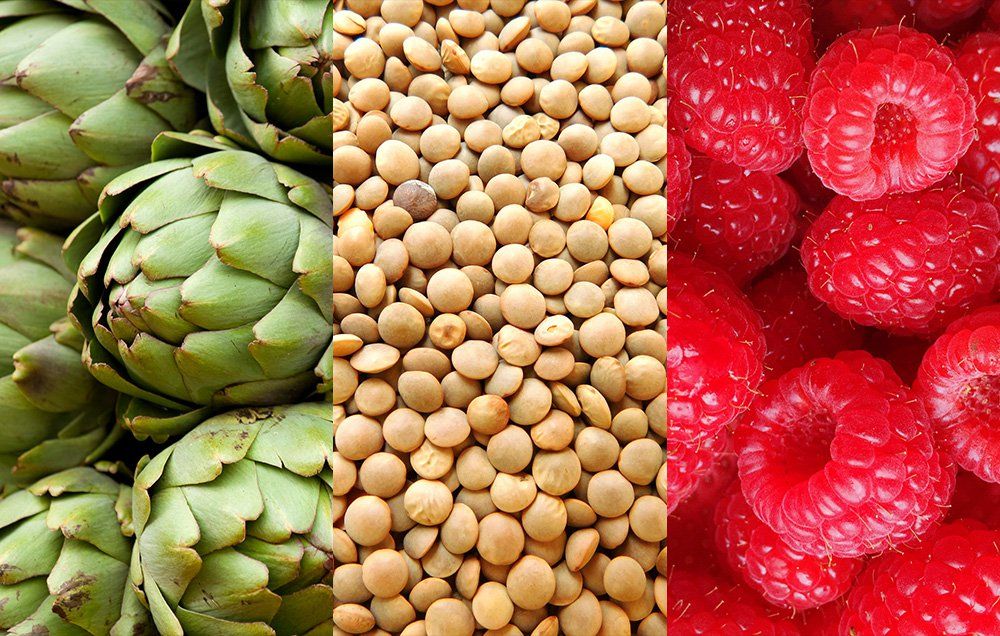Home » Diet & Food »
Fiber Can Be A Game-Changer When It Comes To Weight Loss—Here's How Much To Eat Per Day
If the phrase “fiber in your diet” calls to mind images of your mom popping Metamucil tablets, we don’t blame you—fiber is basically the Golden Girls of the nutrient world. However, it’s also an essential for weight loss.
Fiber is about as close to a magic weight loss ingredient as you can get, says Keri Gans, RD, author of The Small Change Diet. Unfortunately, most of us aren’t getting enough of it, she says.
How much fiber should you eat per day?
According to the 2015 – 2020 Dietary Guidelines, the average woman should be getting 25 grams of fiber per day. That’s the amount in seven apples, or 12 cups of broccoli, or seven and a half cups of oatmeal. We’re going to take a wild guess that you’re not eating that many apples.
How does fiber help you lose weight?
Getting an adequate amount of that nutrient through whole foods (not fiber supplements) keeps you fuller longer because fiber digests much slower than simple carbs. And the more full and satisfied you feel after eating healthy, fiber-filled foods, the less tempting those cookies in the break room will be after lunch, says Gans.

Another bonus that comes with packing fiber into your diet is that healthy weight-loss friendly foods, like fruits, veggies, and whole grains, are already full of the stuff, says Gans. So by aiming to meet your fiber quota, rather than counting calories, you’ll end up making better food choices overall, she says.
What are the other health benefits of eating enough fiber?
Fiber is an essential nutrient for health, says Katie Hake, RDN at Indiana University Health. “Fiber can help to reduce cholesterol, which helps prevent heart disease. It can also help control blood sugar by slowing down the breakdown of food, particularly for those who live with diabetes.”
On top of that, this essential part of your diet keeps your digestive system trucking along, so you won’t be bloated or constipated. (Insert poop emoji here.) How exactly does fiber do that? It depends on the kind you’re consuming.
There are three kinds of fiber: soluble, insoluble, and fermented. The first two aid digestion, but each type has a different role. “Soluble fiber, from oats, nuts, and seeds, acts as a broom to ‘sweep’ things along,” says Hake. Insoluble fiber, from things like cabbage, brown rice, and some dark leafy vegetables, on the other hand, promotes bowel movement by making your stool easier to pass. “[It’s] non-digestible and adds bulk to the stool, which can aid in moving things along,” says Hake.

Then, there’s fermentable fiber, which you can get from foods like beans and garlic. “Fermentable” means the fiber holds an ability to promote growth of good bacteria in the gut, similar to probiotics, says Hake.
How can I eat 25 grams of fiber a day?
Since pounding half a dozen apples at the end of your day to meet your fiber goal isn’t appetizing, the best strategy is to spread your servings out across all your meals and snacks for the day, says Gans.
“All of your meals should include at least eight grams of fiber,” she says. To hit the 25 grams per day goal, snack on a medium pear or a half an avocado, which have about six grams of fiber each, says Gans.

To ramp up your fiber intake at each meal, start including oatmeal, which has four grams per cup, quinoa (five grams per cup), and barley (eight grams per 1/4 cup) into your menu. To up the ante even further, get friendly with fiber-filled mix-ins like chia seeds (10 grams per ounce), and chickpeas (about nine grams per 1/4 cup).
Above all, remember that fiber is your friend.
What foods are highest in fiber?
If you need more ideas of high-fiber foods you can add to your daily diet, there are plenty of other options. Here’s a list of foods you can try, according to Hake.
- Lentils (7.8 g of fiber per half cup) “Lentils can be a great source of protein for lentil tacos, chili, or stuffed in cooked peppers.”
- High-fiber bran cereal (9.1 grams of fiber per half cup) “It’s an easy food to add to yogurt or eat for breakfast to help keep you full for a busy day ahead.”
- Navy beans (9.6 grams of fiber per half cup, cooked) “They’re easy to add to a soup or salad for an added fiber boost.”
- Black beans (7.7 grams of fiber per half cup, cooked) “these make a great base for all kinds of meals and add additional fiber.”
- Artichokes (7.2 grams of fiber per half cup, cooked) “Try adding artichokes to a salad or on top of homemade pizza for a twist.”
Can you eat too much fiber, and what happens if you do?
It is possible to have too much fiber, especially if you’re incorporating supplements into your diet or if you consume in excess of the dietary guideline limit of 25 grams a day. If you’ve had too much, you’ll feel it. “Consuming an excess of the dietary guidelines can cause gas, bloating, discomfort, nausea, and even constipation,” says Hake.
Again, the best way to avoid going overboard is to avoid fiber supplements. If you’re just beginning to monitor and up your fiber intake, Hake suggests increasing gradually to allow your body time to adjust and minimize symptoms. Drinking plenty of water can also help reduce any likelihood of stomach aches from upping your daily fiber.
Source: Read Full Article



